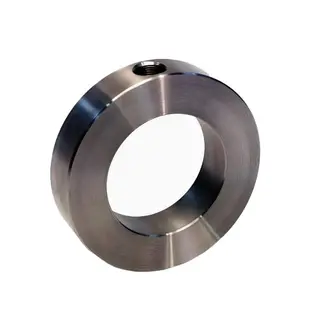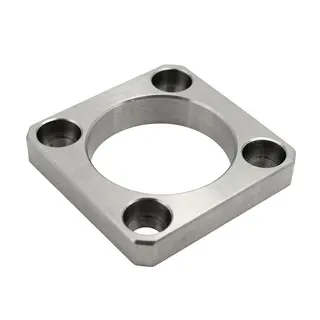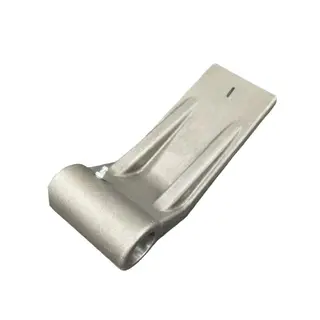In modern manufacturing, forging processes play a crucial role. They not only enhance the mechanical properties of metal materials but also produce parts of various shapes and sizes to meet the demands of different industrial sectors. Free forging and die forging, as two major branches of forging processes, each have their unique characteristics and applications. This article will delve into these two forging methods to help readers better understand their advantages and disadvantages, scope of application, and significance in actual production.
Free forging is a traditional forging process that primarily relies on simple tools such as hammers, anvils, dies, tongs, punches, and pads to perform various operations on ingots or billets, such as upsetting, drawing, bending, punching, and hole expansion, in order to produce part blanks. The core of this forging method lies in its flexibility. Operators can adjust various parameters in the forging process according to different needs to obtain forgings of the desired shape and size.
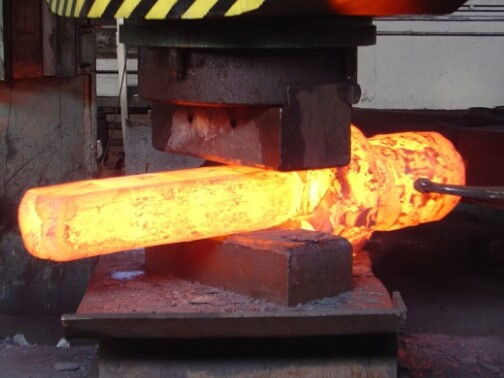
The characteristics of free forging are mainly reflected in the following aspects:
Large machining allowance and low production efficiency: Since free forging is completed through manual operation, a large machining allowance is often required during the process to facilitate subsequent mechanical machining. This not only increases material waste but also reduces production efficiency.
Forging quality highly depends on workers: The mechanical properties and surface quality of free forgings largely depend on the technical skills and experience of the production operators. Improper operation by workers may lead to defects in the forgings, affecting their final performance and quality.
Suitable for small-batch or large-piece production: Free forging is usually used for single-piece or very small-batch production, especially for large or complex-shaped forgings. Free forging can better meet their production needs. Additionally, in the billet-making step of die forging, free forging is sometimes used to complete some preliminary forming work.
The selection of free forging equipment mainly depends on the size of the forging. Common free forging equipment includes air hammers, steam-air hammers, and forging hydraulic presses, etc. These devices have their own characteristics and can meet the production needs of forgings of different weights. For example, air hammers are suitable for lighter forgings, while forging hydraulic presses are more suitable for the production of large forgings.
The free forging process mainly includes the following steps:
Basic operations: These include upsetting, drawing, punching, bending, cutting, twisting, shifting, and welding. Among them, upsetting, drawing, and punching are the most commonly used operations. These operations cause plastic deformation of the blank through different methods to obtain the desired shape and size.
Auxiliary operations: Such as pressing the clamp mouth, pressing the ingot edge, and cutting the shoulder. These operations are mainly used for pre-deforming the blank to facilitate subsequent forging operations.
Finishing operations: Mainly to reduce surface defects of the forging, such as removing unevenness on the surface of the forging and reshaping, to improve the surface quality and dimensional accuracy of the forging.
The advantage of free forging lies in its high flexibility, which can produce forgings ranging from small to extra-large pieces. In addition, the tools used in free forging are mostly common tools, with low requirements for equipment accuracy and relatively short production cycles. However, free forging also has some limitations. Its production efficiency is far lower than that of die forging, with simple forging shapes, low dimensional accuracy, and rough surfaces. At the same time, free forging requires high labor intensity and technical level from workers, and it is relatively difficult to achieve mechanization and automation.
Different from free forging, die forging is a forging method that uses molds to shape the blank on a dedicated die forging machine. Die forging involves placing the blank into the die cavity between the upper and lower dies and using the downward impact or pressure of the forging hammer head, press, slide, or hydraulic press ram to cause deformation of the blank within the die cavity, thereby obtaining the desired forging.
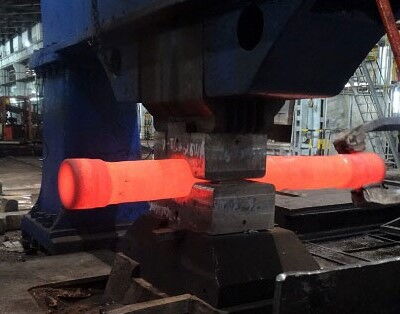
Die forging has the following significant characteristics:
High production efficiency: In die forging, the deformation of the metal takes place within the die cavity, allowing for the rapid attainment of the desired shape. Therefore, the production efficiency of die forging is much higher than that of free forging.
High dimensional accuracy: The dimensions of die forgings are mainly guaranteed by the mold and are less affected by the operators. As a result, die forgings have high dimensional accuracy, small machining allowances, and better surface quality.
Uniform internal structure: The internal structure of die forgings is uniform, with minimal variation in properties between pieces, which can enhance the service life of the parts.
Suitable for mass production: Since die forging requires the use of molds, which increases investment, it is more suitable for mass production. With a sufficiently large batch size, die forging can reduce the production cost of parts.
Common equipment used in die forging includes die forging hammers, crank presses, friction presses, electric (or hydraulic) screw hammers, and die forging hydraulic presses, etc. These devices each have their own advantages and can meet different production needs. For example, die forging hammers are suitable for producing complex-shaped forgings, while crank presses are more suitable for producing large forgings.
The die forging process is relatively complex and mainly includes the following steps:
Blank making: Before die forging, the blank usually needs to be pre-formed. Blank making can be done through free forging or roll forging equipment to ensure that the shape and size of the blank meet the requirements of die forging.
Die forging forming: Place the pre-formed blank into the die cavity and use the downward impact or pressure of the forging hammer head, press, slide, or hydraulic press ram to cause deformation of the blank within the die cavity, thereby obtaining the desired forging.
Post-processing: After the die forging is formed, some post-processing operations are usually required, such as heat treatment, cleaning, and inspection, to improve the performance and quality of the forging.
The advantages of die forging lie in its high production efficiency, high dimensional accuracy, uniform internal structure, and suitability for mass production. However, die forging also has its limitations. Die forging requires the use of molds, which increases investment costs, making it unsuitable for single-piece and small-batch production. In addition, the weight of die forgings is limited by the capacity of general die forging equipment, mostly below 70 kilograms. The production cycle of die forging is longer, the cost is higher, and the mold manufacturing cycle and cost are also high.
Free forging and die forging each have their own advantages and disadvantages and are suitable for different production scenarios. The following is a detailed comparison of these two forging methods.
Free forging: Low production efficiency, suitable for single-piece or small-batch production.
Die forging: High production efficiency, suitable for mass production.
Free forging: Low dimensional accuracy, rough surface, and high technical requirements for operators.
Die forging: High dimensional accuracy, good surface quality, and less affected by operators.
Free forging: Simple equipment, low investment cost, and low requirements for equipment accuracy.
Die forging: Requires special equipment and molds, high investment cost, and long mold manufacturing cycle.
Free forging: Suitable for single-piece or small-batch production, especially for large or complex-shaped forgings.
Die forging: Suitable for mass production and capable of producing complex-shaped forgings to improve the service life of parts.
Next, let's understand the application of free forging and die forging in actual production through specific cases and appreciate their key roles in shaping industrial masterpieces.
Free forging is widely used in aerospace, shipbuilding, heavy machinery, and other fields. For example, in the aerospace field, the production of some large engine blades and wing structural components adopts the free forging process. Although these components have high requirements for dimensional accuracy and surface quality, their complex shapes make free forging a better choice for meeting production needs.
Die forging is widely used in automobile manufacturing, mechanical processing, and other fields. For example, in automobile manufacturing, the production of key components such as engine crankshafts and connecting rods usually adopts the die forging process. These components have extremely high requirements for dimensional accuracy and surface quality, and die forging can quickly and efficiently produce forgings that meet the requirements, improving production efficiency and product quality.
Free forging and die forging, as two major branches of forging processes, each have their unique advantages and limitations. Free forging, with its flexibility and adaptability, is suitable for single-piece or small-batch production, especially for large or complex-shaped forgings. Die forging, with its high efficiency, high precision, and suitability for mass production, holds an important position in modern manufacturing. In actual production, enterprises should choose the forging process reasonably according to their own production needs and resource conditions to achieve the best production results and economic benefits.

